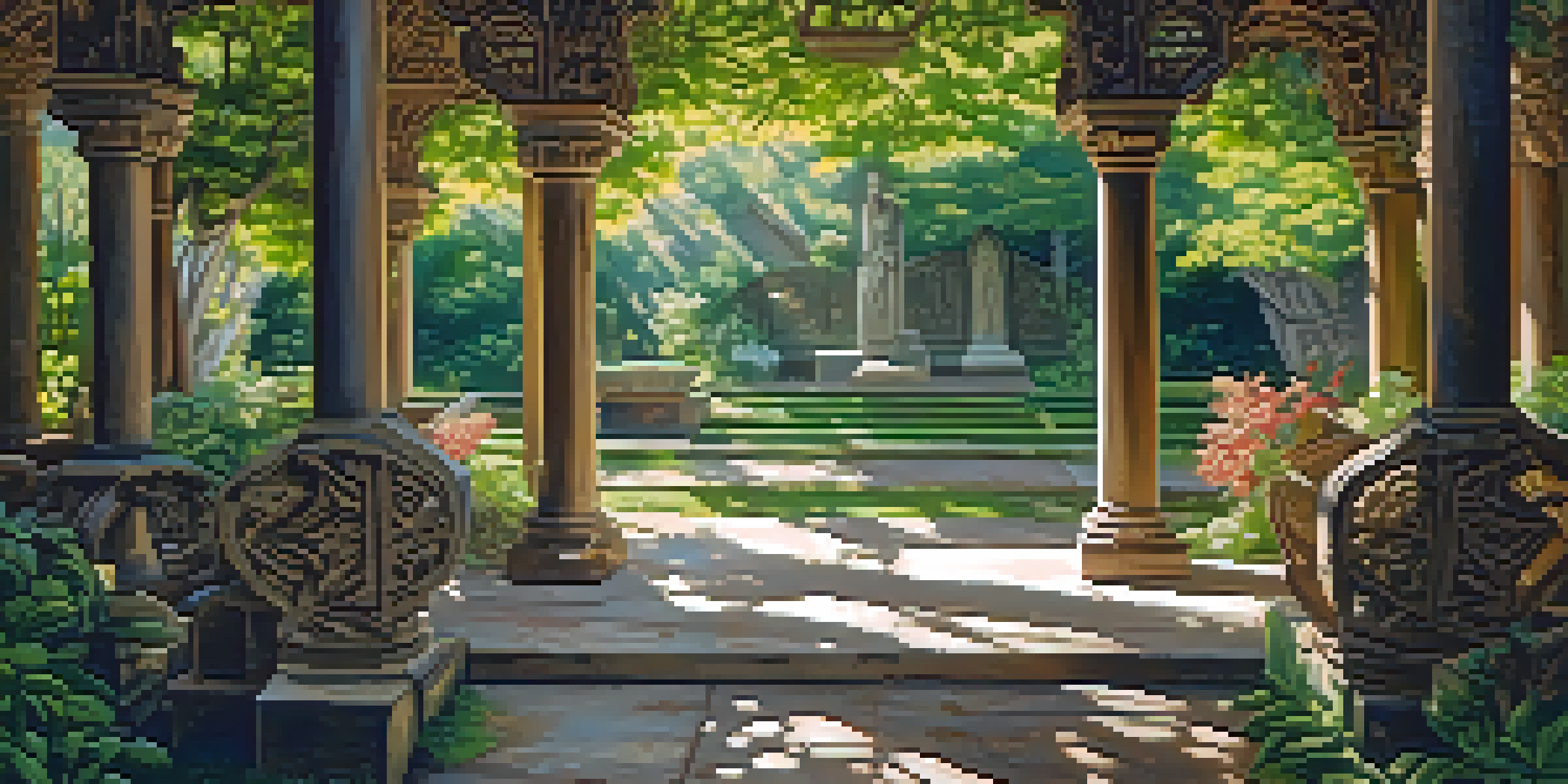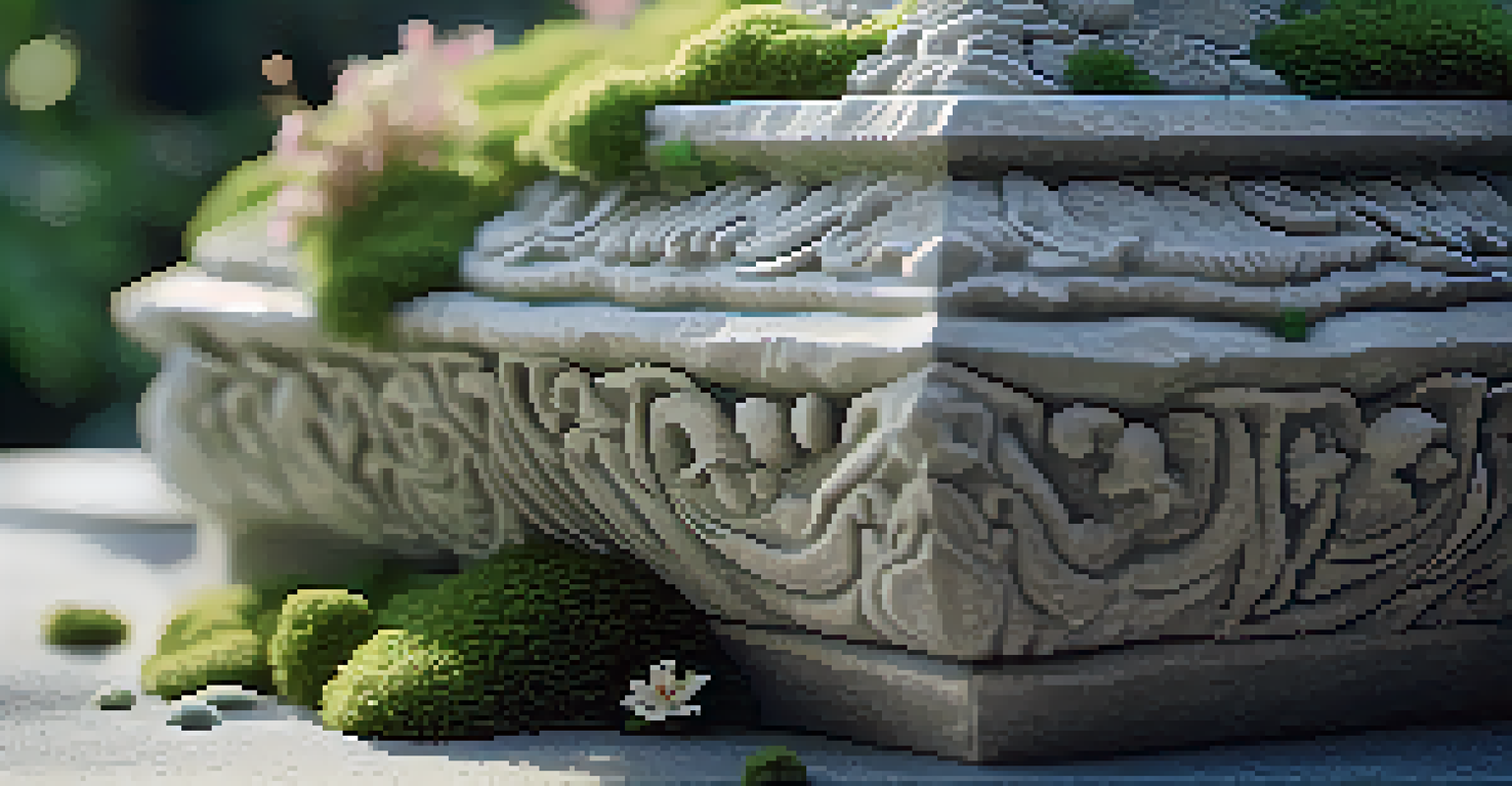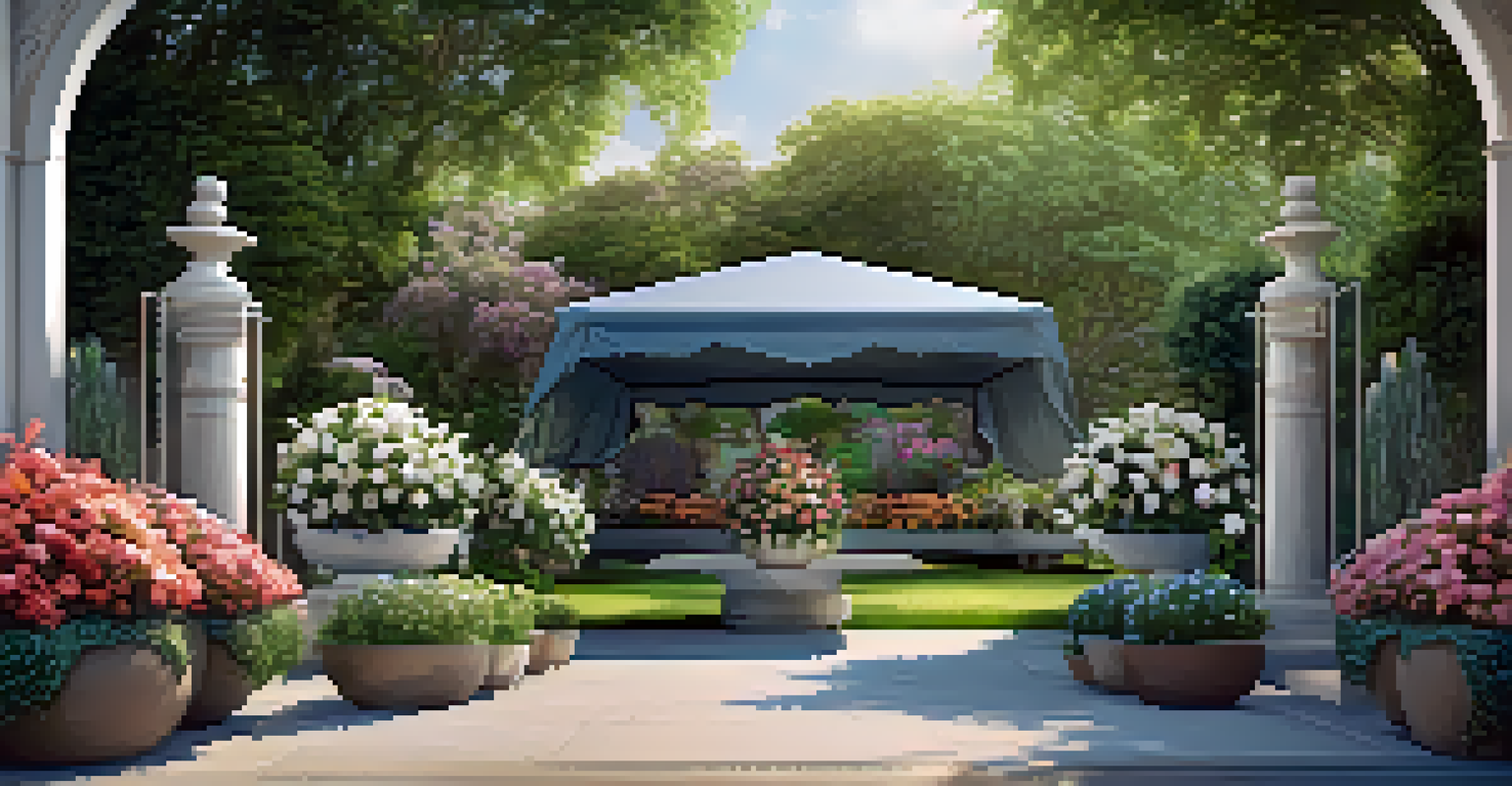How to Maintain and Care for Carved Elements Outdoors

Understanding the Material of Your Carved Elements
Carved elements can be made from various materials like wood, stone, or resin. Each material requires a unique approach to maintenance to ensure longevity. For instance, wood is prone to weathering, while stone can withstand harsher conditions but may still need care.
Preservation of our heritage is not a task for the faint-hearted. It requires patience, care, and a deep understanding of the materials we cherish.
Knowing what your carved elements are made of allows you to choose the right cleaning products and techniques. This understanding helps prevent damage that could arise from using the wrong materials, such as harsh chemicals or abrasive tools.
Ultimately, recognizing the material is the first step in crafting a tailored care routine that keeps your outdoor carvings looking their best.
Regular Cleaning: A Key to Longevity
Like any outdoor decoration, carved elements accumulate dirt, dust, and organic debris over time. Regular cleaning helps maintain their aesthetic appeal and prevents the buildup of harmful substances. A gentle rinse with water and a soft brush or cloth can often do the trick.

For wooden elements, using a mild soap solution can be beneficial, but it's essential to rinse thoroughly to avoid soap residue. Stone carvings can be cleaned with a soft brush to remove any moss or algae without causing scratches.
Know Your Carving Material
Understanding the material of your carved elements is crucial for selecting the appropriate cleaning methods and protective treatments.
By incorporating regular cleaning into your routine, you not only preserve the beauty of your carvings but also extend their lifespan.
Protecting Carvings from Weather Elements
Weather can be a significant factor in the wear and tear of outdoor carved elements. Sunlight, rain, and snow can lead to fading, cracking, or warping. To mitigate these effects, consider using protective coatings or sealants designed for the specific material of your carvings.
The beauty of aging is not in the fading of the surface, but in the depth of character it reveals.
For instance, a UV-protective finish can shield wooden carvings from sun damage, while a water-repellent sealant can protect stone from moisture. Additionally, moving elements to a sheltered location during extreme weather can help preserve their integrity.
Taking these precautions ensures that your carved elements continue to impress for years to come.
Addressing Repairs Promptly
Over time, even the most well-cared-for carvings can experience wear and tear. Cracks, chips, or fading can occur, but addressing these issues promptly can prevent further damage. Inspect your carved elements regularly for any signs of distress.
For minor repairs, wood glue or epoxy can be effective for fixing cracks, while paint or stain can help rejuvenate faded areas. It's essential to match the repair materials to the original elements to maintain consistency in appearance.
Regular Maintenance is Essential
Incorporating regular cleaning and seasonal adjustments into your routine helps preserve the beauty and longevity of your outdoor carvings.
By staying proactive about repairs, you can keep your carved treasures looking fresh and inviting.
Seasonal Maintenance: Adjusting for the Weather
As seasons change, so do the care needs of your outdoor carved elements. In fall, for example, leaves can accumulate around your carvings, leading to moisture buildup that can cause decay. During this time, regular checks and cleaning are crucial.
In winter, snow and ice can be particularly harsh. Be sure to brush off heavy snow and avoid using salt or chemicals that could harm the surface of your carvings. In spring, watch for mold or mildew that may develop as temperatures rise.
By adjusting your maintenance routine according to the seasons, you can ensure that your carved elements remain in top condition year-round.
Choosing the Right Location for Your Carvings
The location of your carved elements can significantly impact their longevity. Placing them in a shaded area can protect wooden carvings from sun damage, while ensuring they are not exposed to excessive moisture can help prevent rot. Consider the environmental factors at play in your garden or outdoor space.
Additionally, avoid placing carvings near plants that may shed leaves or flowers, as these can trap moisture against the surface. Instead, opt for locations that allow for good airflow and drainage.
Location Matters for Durability
Choosing the right location for your carvings can significantly enhance their protection from environmental elements and extend their lifespan.
By thoughtfully selecting the right spot for your carved elements, you can enhance their durability and visual appeal.
Using Decorative Covers for Added Protection
For added protection against the elements, decorative covers can be a smart investment. There are various options available, from breathable fabric covers to stylish tarps that can complement your outdoor decor. These covers guard against moisture, sun, and dust when not in use, ensuring your carvings remain pristine.
When selecting a cover, ensure it's designed for outdoor use and fits your carvings well to avoid trapping moisture underneath. Regularly check the covers for wear and tear, replacing them as needed to maintain protection.

By incorporating covers into your care routine, you can give your outdoor carved elements an extra layer of defense against nature's challenges.
Embracing the Beauty of Natural Aging
While maintenance is crucial, it’s also important to embrace the natural aging process of your carved elements. Over time, wood may develop a beautiful patina, and stone may become more textured and interesting. This aging can add character and charm to your outdoor space.
Instead of trying to restore carvings to their original condition, consider enhancing their natural beauty with regular care that respects their history. This approach allows you to appreciate the story behind each carving and how it evolves over time.
By valuing the beauty of aging, you create a more authentic outdoor environment that showcases the artistry of your carved elements.